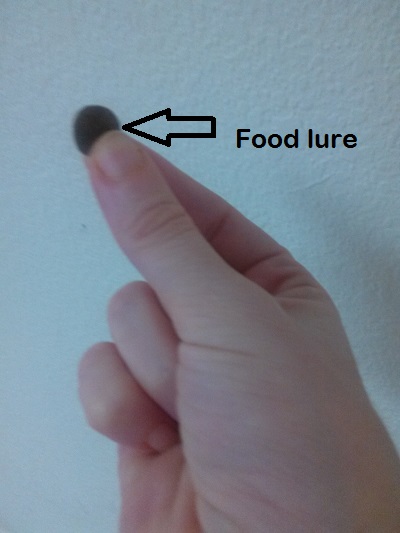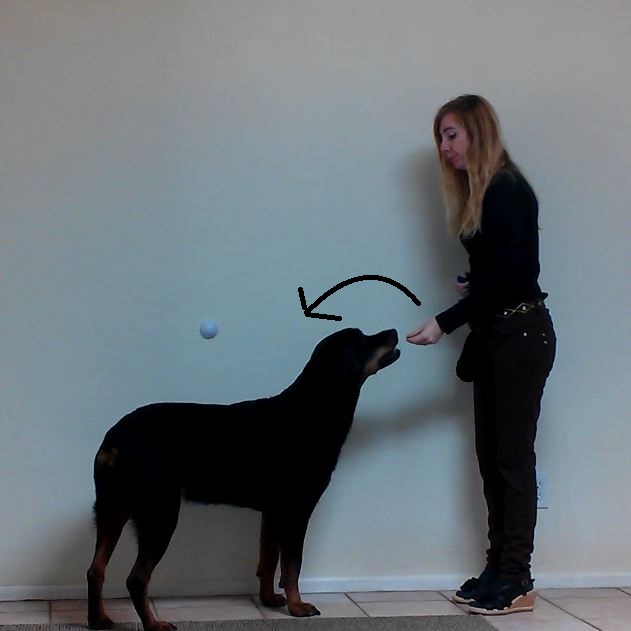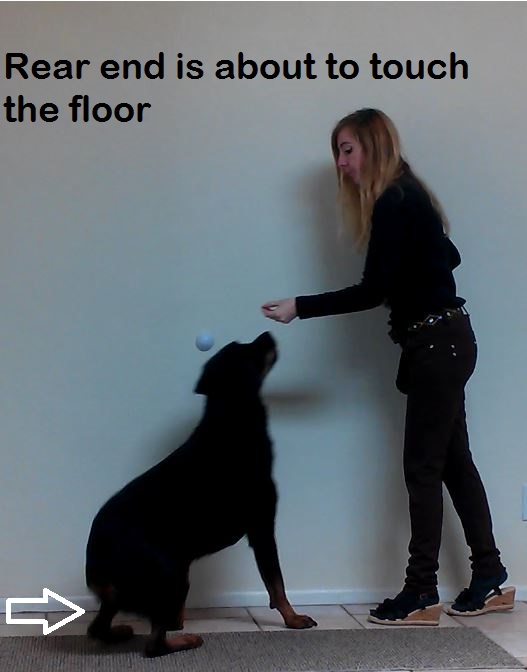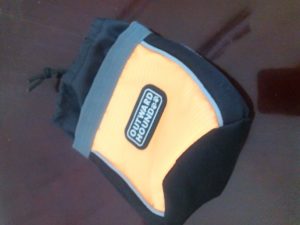Troubleshooting your Rottweiler’s Sit
Obedience training would be a breeze if there were never any problems and trainers would be unemployed if all dogs would magically sit with the touch of a magic wand! We are humans and can make mistakes and dogs may need some TLC at times when it comes to completing certain exercises. If you are having trouble getting your Rottweiler to sit, please don’t get frustrated, you are not alone. Usually, patience and persistence will pay off, but you might need to do a little troubleshooting first to see what might be the problem. It could be something as tiny as posture and the way you deliver the treat. Here are some common scenarios.
My Rottweiler is Not Following the Food Lure
OK, this can happen and you might need to evaluate a couple of things. Is the area where you are training too distracting? You may need to train in a quieter place. Look for an indoor room in your home where there is nothing going on. Your dog will be more likely to focus on you. Look for high-value treats that are worthy of paying attention. When you move the food lure, do so slowly. You may need to break the exercise in small steps. For instance, click/verbally mark and reward for following the food lure for half and inch, then an inch, then a couple of inches more until your Rottweiler looks upward and eventually sits.
 My Rottweiler Tries to Jump to Get the Food Lure
My Rottweiler Tries to Jump to Get the Food Lure
You may see this in puppies or young dogs. If your Rottweiler starts jumping the moment he sees the food lure in your hand, say “oops!” and hold the treat behind your back as you move to another area and try again. Repeat several times.
At some point, your Rottweiler should understand that jumping won’t earn him the treat. When he’s calmer and gets the point, you can try again until you get to have him perform the exercise.
If your Rottweiler jumps when you are delivering the treat upon sitting, you can help your Rottweiler succeed, by delivering the treat low as seen in the picture.
You can even try to do the exercise sitting down on a chair so your Rottweiler is less likely to want to jump up.
My Rottweiler Follows the Lure but Won’t Sit!
Sometimes some dogs may back up rather than sit. In this case, it can help to perform the exercise against a wall, so with no where to go, your Rottweiler will sit. You might also holding the food lure too high or too low, watch the video on the training your Rottweiler to sit page to see the correct execution. If your Rottweiler is old or has some spine or orthopedic problems, consider that the exercise may cause your dog to feel uncomfortable. Check with your vet.
My Rottweiler Sits and Then Gets Up
If your Rottweiler sits and then gets up when it’s time to reward him, make sure that you don’t reward him! Otherwise he’ll be thinking that you are rewarding for getting up from the sit and not the sit. So say “ooops!” and put that treat away. The treat comes only when the bottom is on the floor. You may need to repeat this exercise a few times until your Rottweiler has it down.
 Step 1: Hold your treat as a food lure by keeping it between your index finger and thumb. Let the treat protrude slightly so that your Rottweiler can see it or sniff it and acknowledge its presence.
Step 1: Hold your treat as a food lure by keeping it between your index finger and thumb. Let the treat protrude slightly so that your Rottweiler can see it or sniff it and acknowledge its presence.
 Step 3: Finish the upward hand movement from your Rottweiler’s nose to the back of his head. As your Rottweiler follows the hand movement, he will be looking up and tilting his noise upwards, which will cause his rear legs to bend and start the movement to sit.
Step 3: Finish the upward hand movement from your Rottweiler’s nose to the back of his head. As your Rottweiler follows the hand movement, he will be looking up and tilting his noise upwards, which will cause his rear legs to bend and start the movement to sit. 1. Tasty Treats
1. Tasty Treats
 3. Collar/Harness/Haltis
3. Collar/Harness/Haltis